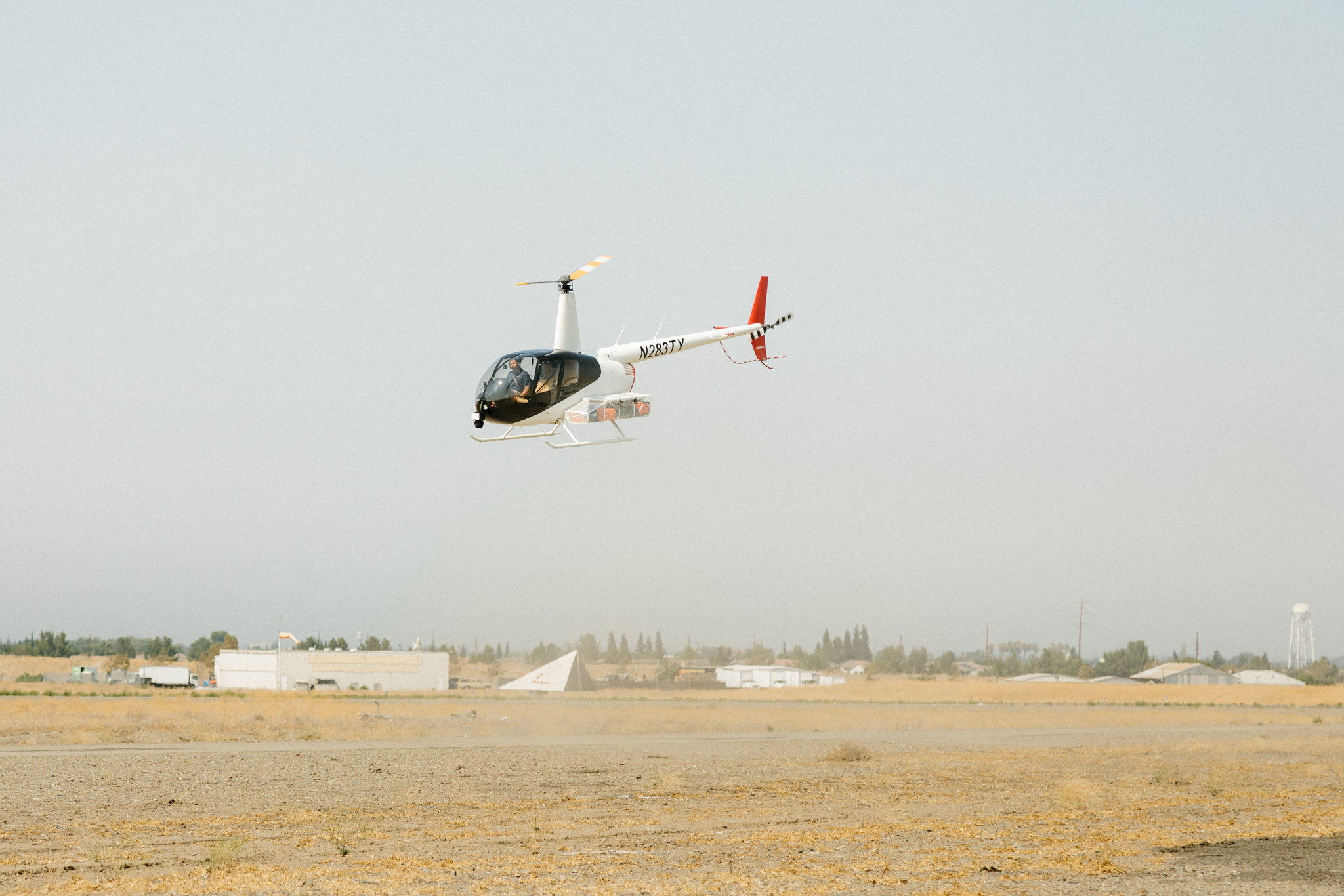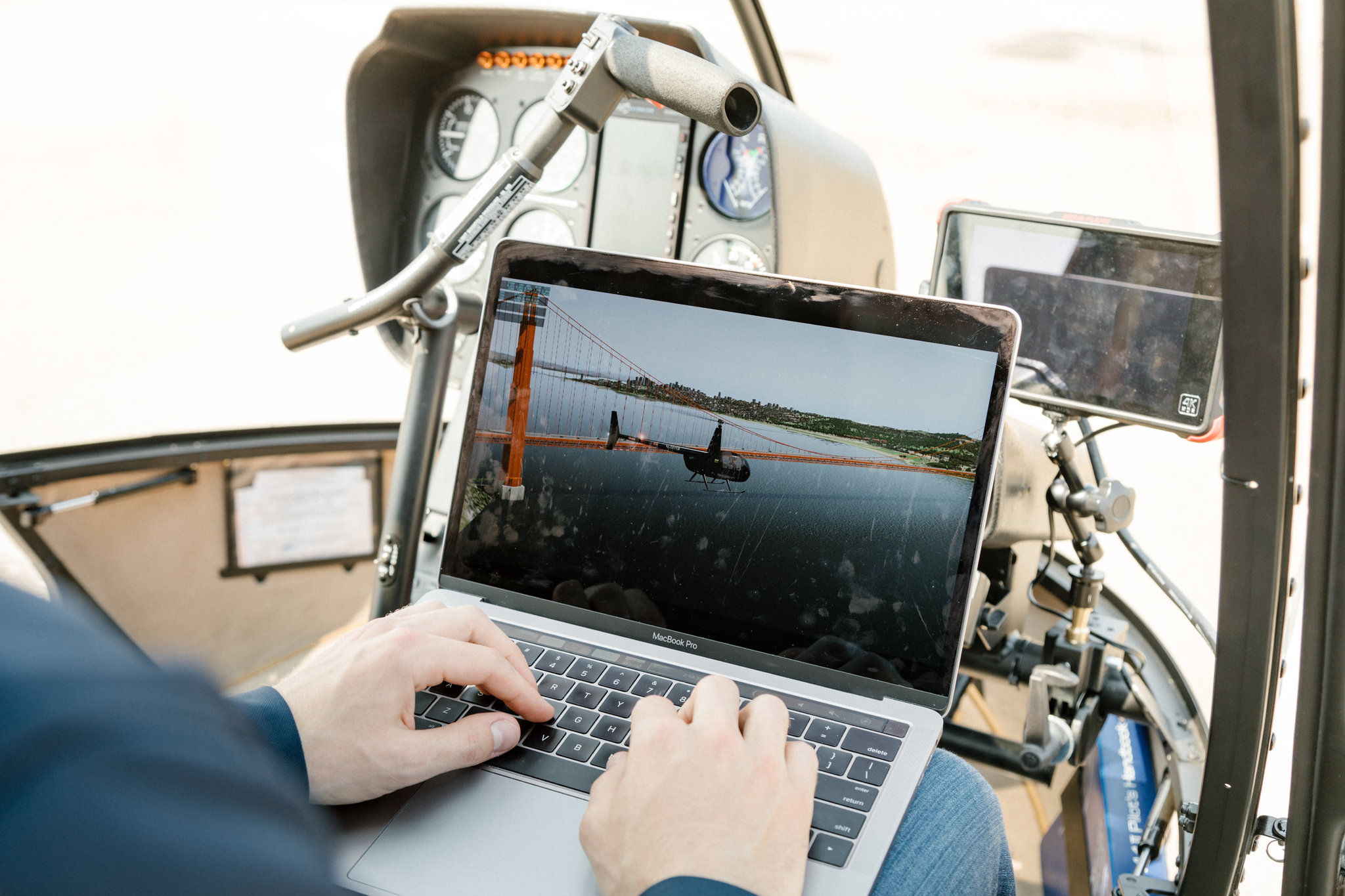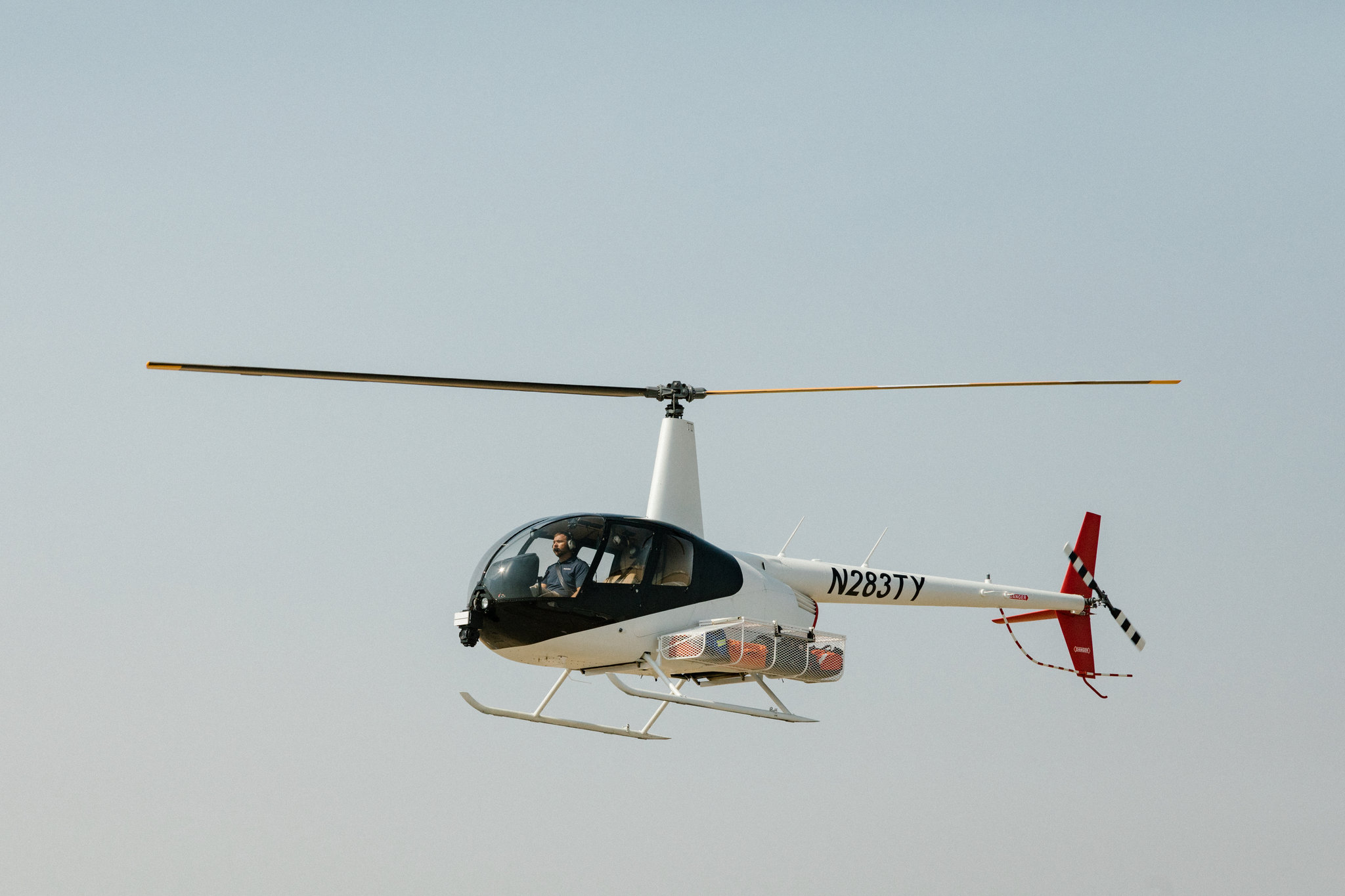Silicon Valley makes a cautious step towards autonomous aircraft
The new service of flying ambulance will use small helicopters with equipment that will eventually allow them to fly without pilots.

Last week, at a small airport located on a dusty plain east of San Francisco, a red-and-white helicopter gently took off and hovered a few meters from the site. It looked exactly the same as any other helicopter, with the exception of a small black cube attached to the nose.
Local officials spent a week testing this aircraft to work in the new rescue service, which is due to start in January and will fly out to call 911. But, moving policemen and doctors over the San Joaquin valley, he will contribute to the development of a more ambitious project. This black cube is working on the ever-growing project of creating small passenger aircraft capable of moving independently.
Today helicopters are driven by experienced pilots. But the new rescue service will be managed by a SkyRyse startup from Silicon Valley, which intends to complement small helicopters and other passenger vehicles with equipment and software that allows for autonomous flight, based on many technologies that are already working in robotic mobiles. Among them - the camera at 360 degrees and radar, built into the nose of the device.
')
“A lot more needs to be implemented before the robots start transporting people,” said Mark Groden, co-founder and director of SkyRyse. "But we are developing a technology that can lead us to this."
Sikorsky Aircraft , now a division of military contractor Lockheed Martin, and Xwing, another Silicon Valley startup, are developing similar technologies. Other companies, including Aurora, now owned by Boeing, are studying autonomous flight issues, creating new electric aircraft in order to provide air taxi services. Uber’s initial aerotaxi business plan , which it plans to start implementing in 5–10 years, says that the company ultimately hopes to remove the pilots from the aircraft.

SkyRyse has equipped the camera with 360 degrees and radars
Their motivation is obvious. Pilots are expensive and must rest between flights. Autonomous flights can generate new types of services or even change the entire economy of today's airlines. While companies like Aurora are creating aircraft for autonomous flights, entrepreneurs like Groden find it much more realistic to try to adapt existing machines. But any of the paths will take a lot of time, both for technical and cultural reasons.
"The question is not only to create an apparatus capable of flying independently," said Dan Patt, director of the robotic company Vecna, who worked on autonomous flights with Sikorsky and other companies, holding a position at Darpa, a research division of the US Department of Defense. "The question is in collecting evidence that these flights are safe."
The government and representatives of the industry have long worked on the partial automation of passenger flights - the "autopilot" has already become part of American culture [and not just American / approx. transl.] - and in a sense, it is easier to create robolets than robomobils, which have long been tested on public roads. Aircraft move in large, open spaces, and not on narrow roads filled with pedestrians and other cars. Controlling an airplane or a helicopter belongs to tasks with a high degree of methodicity, with which computers usually cope quite easily.
Small drones already demonstrate autonomous flight. Starter Skydio, founded by engineers who came out of Google, sells for $ 2,500 drones that can follow you through the woods while you wag and wind through the trees. Company director Adam Bray, who also worked at Google on a project to create a drone for delivery of orders, said that in principle the same technology - based on digital cameras and mathematical systems that analyze real-time images - is also suitable for passenger aircraft.
“In many ways, technical issues are simpler here,” said Bry. “No one needs these things to be whistled around the forest at maximum speed.” They are required to simply fly reliably, transporting people from point A to point B, and work off their takeoff and landing. ”

“A lot more needs to be implemented before the robots start transporting people,” said Mark Groden, co-founder and director of SkyRyse. "But we are developing a technology that can lead us to this."
But the task of handling the uncertainties that arise during takeoff and landing, not to mention the rare random events that can lead to an accident during flight, can be extremely difficult.
Passenger flights are also governed by many rules and restrictions. Even if companies manage to create a reliable flying system, it will be very difficult for them to push the technology into public airspace.
Therefore, SkyRyse, which received $ 25 million in funding, which includes investments by Silicon Valley venture capital firms like Venrock and Eclipse, is working with the management of the city of Tracy in California. The city rescue service will operate under current federal laws, and will take only one step towards autonomy.
The helicopter is equipped with sensors that are necessary for autonomous navigation. For example, the radar is like a robo mobile laser sensor, and provides a detailed overview of the surrounding terrain, even in bad weather. But now these sensors work together with the pilots. Patt calls this the “way to build trust” with regulators.
At the same time, these sensors collect huge amounts of data describing everything a helicopter encounters from the moment it takes off to the time it lands, and how the pilot reacts to it.

The helicopter is equipped with sensors that are necessary for autonomous navigation. For example, the radar is like a robo mobile laser sensor, and provides a detailed overview of the surrounding terrain, even in bad weather.
Using this data, engineers from SkyRyse recreate the flight conditions in virtual reality, and develop systems that can move in these simulations. Robo-mobile manufacturers use similar technologies.
“We can simulate gusts of wind, engine failure, birds pulled into the tail rotor,” said Groden.
But the implementation of the results of work in such a rescue service, like the one that works in Tracy, will take years. Their transfer to the air taxi service may take even more.
The helicopters used in SkyRyse - Robinson R44 four-seater - are small and quiet by today's standards, and are used quite often (6000 have already been built). But when used in large quantities it may turn out that they are not suitable for densely populated areas. That is why companies such as Aurora and Kitty Hawk, a Silicon Valley startup, are creating new type of aircraft.
And yet, the greatest obstacle may be the collection of evidence in the safety of autonomous flights for regulators and the public. “A lot of startups are involved in such things,” said Igor Cherepinsky, director of autonomous programs at Sikorsky. “And quite a few of them naively underestimate the difficulties.”

Autonomous flights can generate new types of services or even change the entire economy of today's airlines.
Source: https://habr.com/ru/post/421761/
All Articles